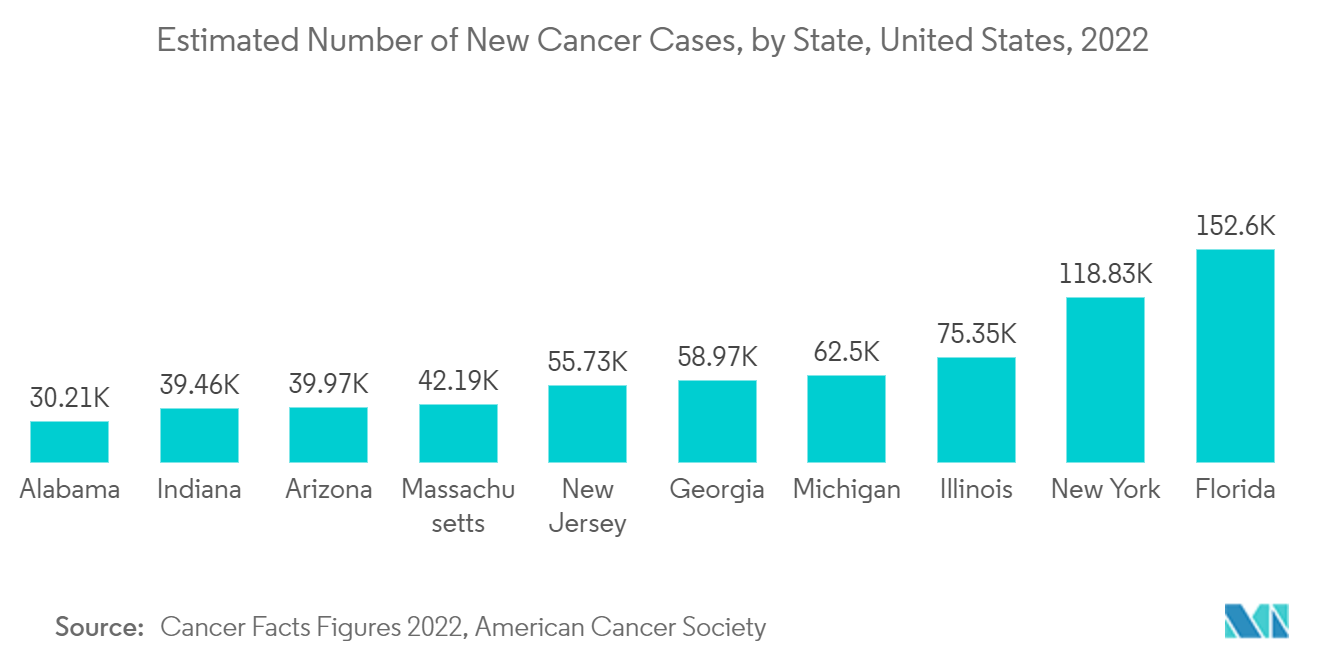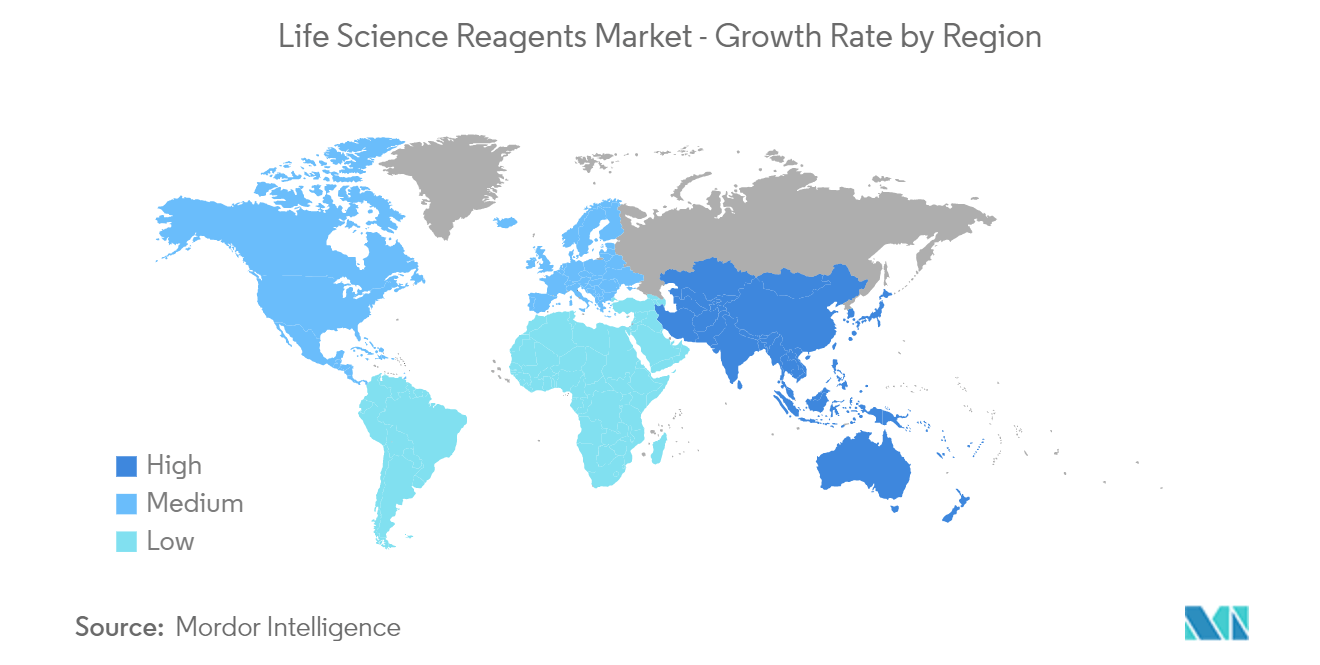Market Trends of Life Science Reagents Industry
The Hospitals and Diagnostic Laboratories Segment is Expected to Hold Significant Market Share
During the COVID-19 pandemic, the demand for reagents increased as hospitals and diagnostic laboratories widely used life science reagents to test the target patients. Researchers are also using reagents to know the epidemiology of the diseases, which will boost segment growth. Moreover, there has been a rapid increase in molecular point-of-care testing for suspected COVID-19 patients in hospitals across the world, leading to a surge in the use of life science reagent products used in testing, positively influencing the overall market growth. Furthermore, increasing chronic diseases such as cancer is another factor in market growth. For instance, the incidence of other chronic diseases, like cancer, is also high in the United States. According to the 2022 report by the American Cancer Society, an estimated 1.9 million new cancer cases and 609,360 cancer deaths were expected in 2022.
Additionally, strategic initiatives by major key players to strengthen their regent portfolio will boost the market growth. For instance, in October 2021, Dr. Lal PathLabs Limited acquired Sequoia Capital-backed Suburban Diagnostics in an all-cash deal. With this deal, Dr. Lal Pathlabs will get access to 44 laboratories and diagnostic centers and 150 collection centers. In diagnostic laboratories and hospitals, the adoption of life science reagents increased, which is likely to continue during the forecast period to maintain the pace of the life science reagents market.

North America is Expected to Hold a Significant Share in the Market During the Forecast Period
North America is expected to hold a major market share in the global life science reagents market due to the rise in the geriatric population, increasing prevalence, and higher incidence of infectious diseases in this region. According to a July 2022 update by the Centers for Disease Control and Prevention, around six in ten Americans are living with at least one chronic disease, and four in ten adults have two or more chronic diseases. These diseases are one of the major causes of death and disability in North America. Similarly, as per the Canadian Cancer Statistics 2021 released in November 2021, an estimated 229,200 Canadians were diagnosed with cancer in 2021. Furthermore, the International Diabetes Federation (IDF) published in December 2021 estimated 14 million adults in Mexico were living with diabetes. Therefore, for the early and effective diagnosis of the diseases, the demand for life science reagents is expected to increase, hence augmenting the market studied during the forecast period.
Furthermore, launching new products and adopting initiatives such as partnerships, investments, and acquisitions by major market players will boost the market growth. For instance, in April 2021, BOC Sciences launched in-vivo RNA transfection kits in the company's popular in vivo delivery product series, including siRNA in vivo transfection kits and mRNA in vivo transfection kits, which are suitable for in vivo transfection of siRNA and mRNA, respectively. The company also provides customized products that encapsulate target molecules into in vivo transfection reagents that target specific tissues.
Moreover, the increase in research and development activities and the presence of favorable healthcare infrastructure are fueling the growth of the overall regional market to a large extent.


